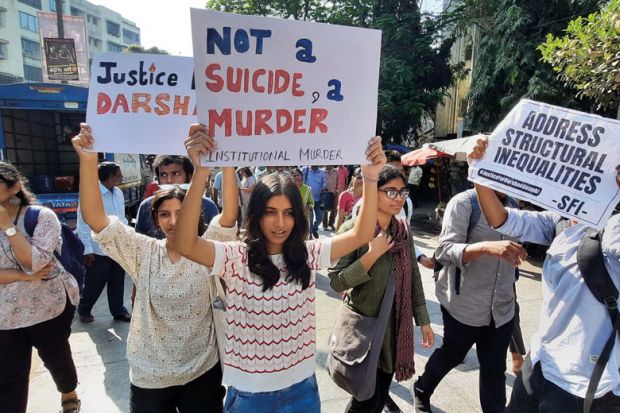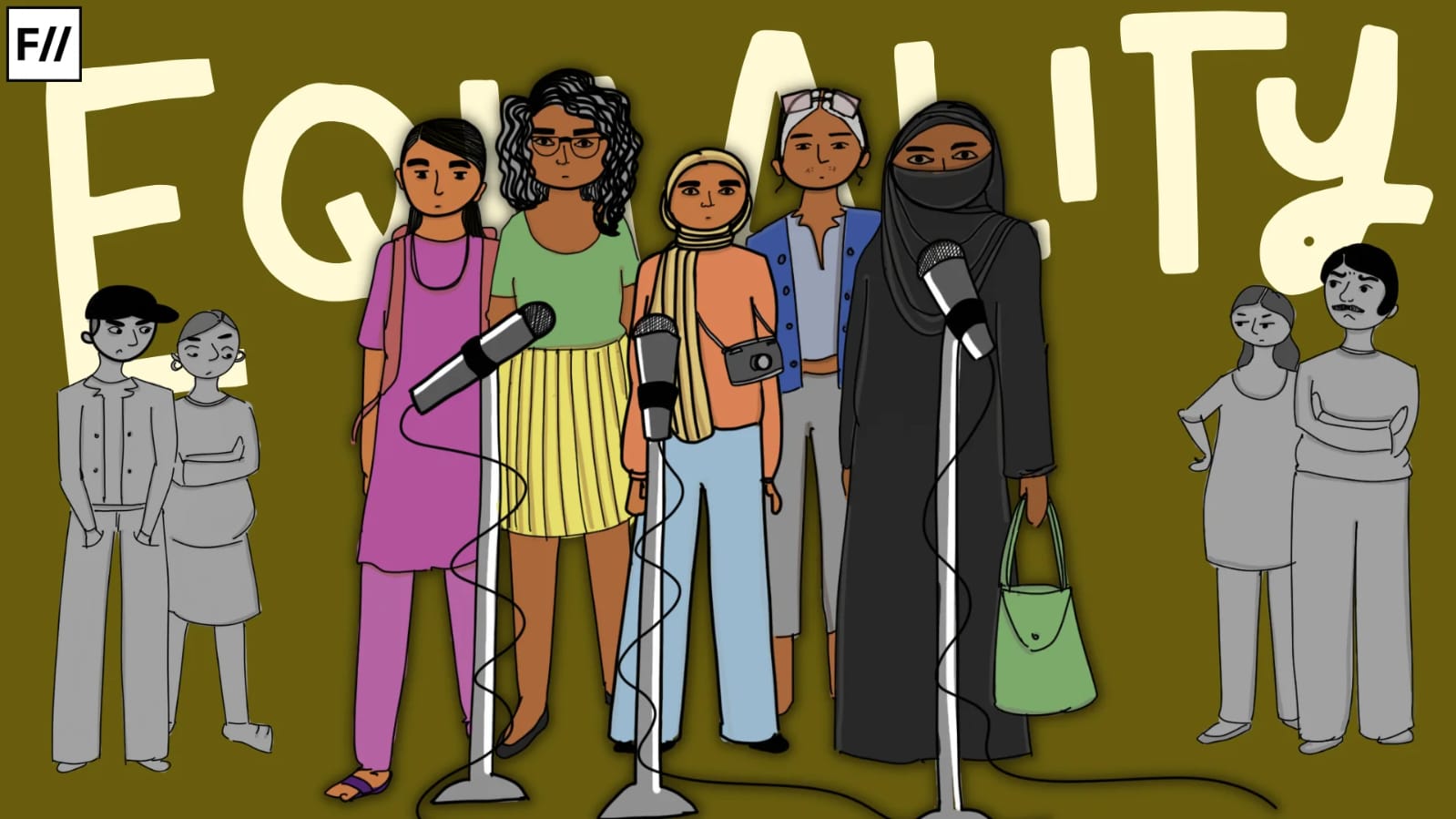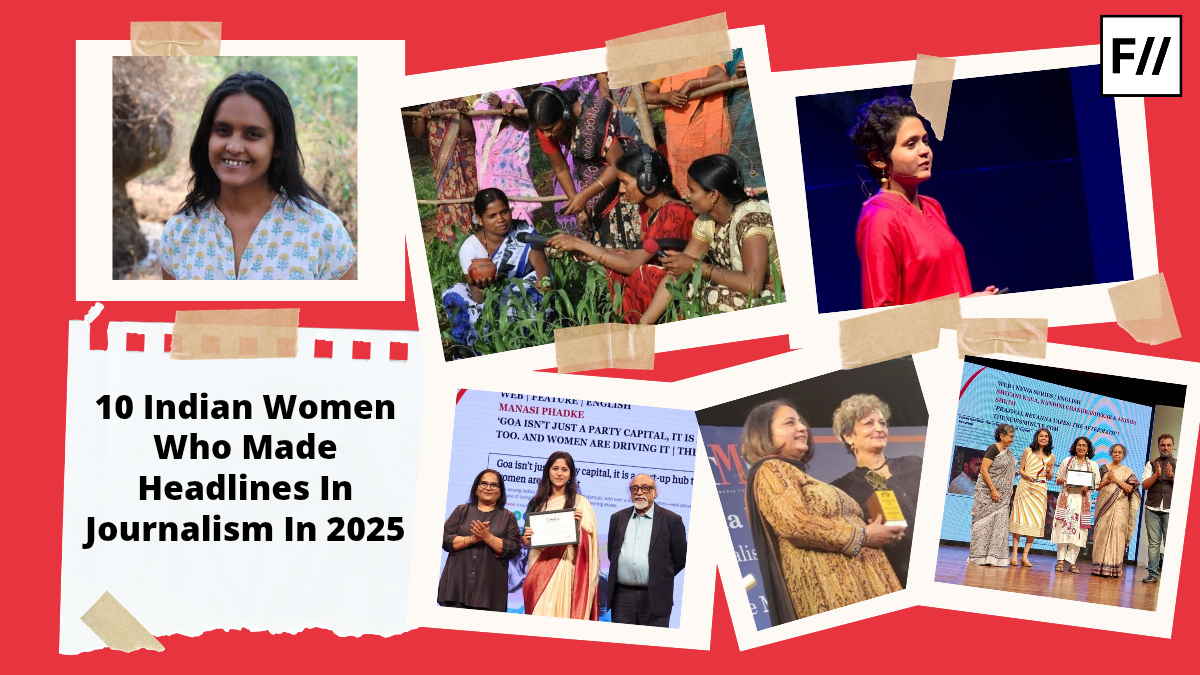When the district administration in Kota decided to install spring-loaded fans in the rooms of students to prevent students’ suicide, netizens were quick to call them out. The incident being referred to here might be of yesteryear, but the similarity between the ideation behind the spring-loaded fans and the newly envisioned “Campus Mothers” programme by IIT Kharagpur reeks of the same underlying problem: the administrative inability to address the structural crises plaguing students’ lives. Moreover, the programme title is indicative of the administration’s myopic and sexist lens that does not see beyond the stereotypical roles that have been attached to Indian women.
The initiative is aimed at training on-campus women, faculty, and non-faculty staff to help students manage their emotional distress. The programme, under consideration, shall cater to students in an informal setting, where such “campus mothers” will facilitate conversations over tea, meals, or quiet conversations and provide an empathetic ear, noticing preliminary signs of distress. As informed by the institute’s director, Suman Chakraborty, the “campus mothers” initiative is a part of the institute’s “bigger” roll-out measure that seeks to safeguard “students’ well-being”.

Since January 2025, the institute has witnessed three suicides, and many more were reported last year. While educational institutions have been reporting an increasing number of suicides each year, the “well-being” of students has been taken into consideration recently. Although the intention might be rooted in students’ welfare, the monolithic image of an Indian woman, from a patriarchal viewpoint, prevents any structural change, resulting in solutions that are not efficient for the long term.
Women and STEM: a relationship rife with obstacles
Research done by Akanksha Swaroop and Tuli Dey has shown the gender disparity among faculty spanning over the IITs. The percentage of women faculty is glaringly low, with the average dropping to as low as 11.24%. That barely makes it to double digits. Despite the structural inequality bred by gendered bias and discrimination, the programme seeks to instil additional responsibilities and vulnerabilities to women faculty by entrusting them with an emotionally laborious task.
There are a handful of women scientists, and if they get involved in peer support, men, on a similar footing, shall have a headstart on their projects, furthering the disparity in STEM research. This will not only increase the burden on IIT Kharagpur’s women faculty but will also act as a hindrance towards the pursuit of scientific endeavours to be undertaken by them.
IIT Kharagpur approximately houses 16,000+ students, with 101 women as faculty (as of the academic year 2021-2022), where each faculty member might be supposed to care for approximately 160 students (not considering the non-faculty trainees, given a gendered breakdown of non-faculty staff is unavailable). This not only increases the burden on IIT Kharagpur’s women faculty but will also act as a hindrance towards the pursuit of scientific endeavours to be undertaken by them. As it is, there are a handful of women scientists, and if they get involved in peer support, men, on a similar footing, shall have a headstart on their projects, furthering the disparity in STEM research. Research has suggested that technical fields see the least number of women faculty, which increases significantly (27.11%) in universities where the faculty teach basic sciences and research. This further proves that one needs to remove the structural inequalities that keep women out of STEM. The existing infrastructure needs a rehaul to make space for women to thrive in their workplace.
Linguistic bias and the creation of a ‘mother’
Linguistic bias is responsible for the sustenance of gender hierarchies. The programme name comes with a set of predefined qualities; the qualities that are expected of an Indian mother. The directive talks about the trainees being an “empath”; one wonders if women are born empaths or if men have not been socialised to express or cultivate empathy. The Indian woman’s social image, earlier, depended on their rearing of a male child, which played a formative role in the dissemination of the “social construction” of an Indian mother.

Thus, the sacrosanct space of an Indian mother was not only glorified, but any deviation was frowned upon. Since then, women have shattered glass ceilings, entered the workforce, challenged hierarchies, yet the institute has reduced women (some of whom have already made their mark as a scientist) to the role of a “mother” only. This not only overshadows their academic achievements but also expects them to tend to “adult” students. To say that every woman on campus resonates with “motherhood” and the qualities of a “mother” are inherent to them since they might’ve experienced it, is deeply problematic.
The social construction of an Indian mother devalues a woman’s attributes, except “motherhood”, and accords the lowest status to a woman under the patriarchal brahmanical hegemony. During the deliberations over the Hindu Code Bill, Madan Mohan Malaviya remarked how women were accorded the highest stature in the Brahman society. Manu’s invocation of the “superiority of the seed over the womb” can find its equivalence in the dissemination of training to “women” only, placing the needs of the students (read: seed) above theirs.
The institute has reduced women (some of whom have already made their mark as a scientist) to the role of a “mother” only. This not only overshadows their academic achievements but expects them to tend to “adult” students.
When referring to a woman’s emotional labour, we are taken back to Arlie Hochschild’s understanding of the same. When “work” was typically thought of as “physical” labour, she coined the term “emotional labour” to account for the “caregiving work” that often gets overlooked in the grand scheme of things. Using the profession of flight attendants as a case study, she underscored the “labour” that is put into the profession, or the “service” that they offer, although “cognitive” in nature, entails an emotional toll, which needs to be managed to provide the best service. Similarly, engaging young, impressionable minds, coming from diverse backgrounds, not only needs rigorous training but a lot more investment of “emotional” labour, which, in addition to academic duties, shall put undue burden on women.
Broken mental health ecosystem for students in India
A cross-sectional study conducted in Tier-1 Indian cities revealed that young adults face significant stress, and anxiety and higher levels of anxiety issues and depression were observed in students, especially in female students. The research highlighted the need for interventions in educational institutions, keeping in mind the varied demographics. The study, being limited to Tier-1 cities, does not reflect the status of mental health of young adults in Tier-2 and Tier-3 cities. This calls for a regional understanding of mental health, taking cognisance of the rural-specific stressors that can cause anxiety and depression among young adults, navigating their educational settings.

While the new programme is not aimed at replacing professional help, students across schools and colleges have reported negative accounts of their interactions with counsellors at their institutions. The students constantly worry about the lack of confidentiality and fear that their parents might be roped in by the administration if they disclose their issues. Additionally, there is a dearth of trained professionals in the field, and oftentimes, counsellors do not have a formal disciplinary training in psychology, while in some cases, the psychology professors act as the counsellor, making way for a conflict of interest. The lack of a regulatory body in such institutions leads to compromises that might negatively affect the children in the long run.
While peer support, in itself, is helpful, combining it with notions of regressive, stereotypical ideals defeats the entire purpose. Organisations across India, especially those focusing on queer rights, like VARTA, have been training individuals to act as the first line of mental health care, to hear them out, via conversations. Peer support, in tandem with psychologists and mental health professionals, shall help foster a learning environment, based on trust and mutual respect, while engaging in conversations in an informal setting, without the technicality and formality. Young adults in colleges and universities do not need to be “mothered”; instead, they need a supportive “ecosystem” that will help them navigate the pitfalls of their academic journey.





